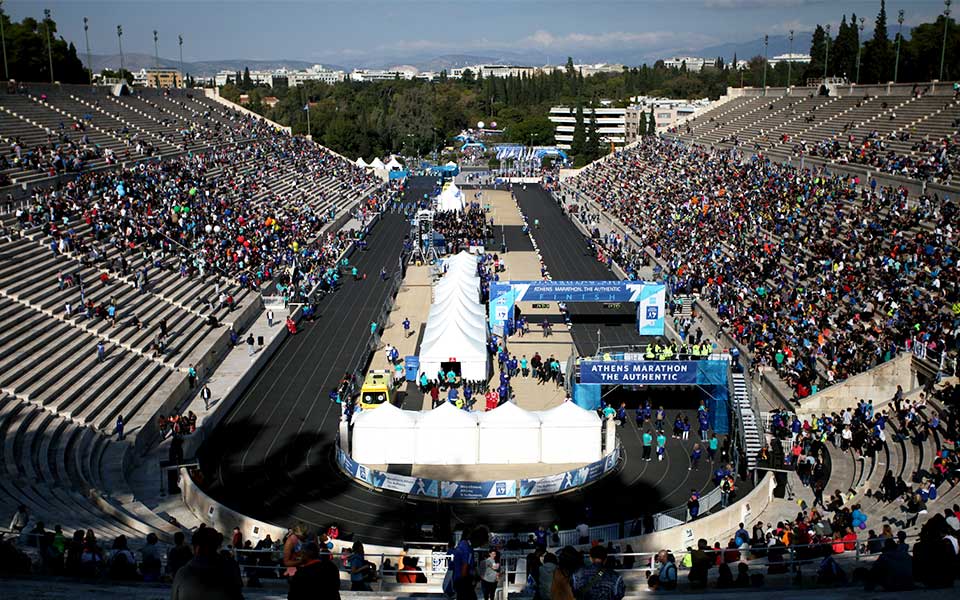The marathon is one of the most iconic and enduring sporting events in the world. Its origins and early development can be traced back to the birth of the Modern Olympic Games, first staged in Athens in 1896, but its roots as a long-distance endurance race go all the way back to the Battle of Marathon in 490 BC, a pivotal moment in Western history.
The modern Athens Classic Marathon, also known as “The Authentic,” first took place on April 8, 1972. The 42km course was designed to imitate the route taken by the legendary runner Pheidippides, who delivered the news of the Greek victory at Marathon to the Athenian Assembly. This inaugural race attracted only 70 participants from five countries, but quickly gained international recognition, establishing itself as a major annual event on the sporting calendar alongside the Boston, New York and Chicago Marathons.
Over the years, the Athens Classic Marathon has grown in popularity and prestige, attracting elite runners from around the world, as well as thousands of recreational and amateur runners, with many raising funds for various charities.
As Greek and international athletes of all levels of experience descend on Athens this weekend, November 11-12, to take part in the 40th edition of the “Authentic” Marathon, we look back at its origins, and the legendary event that inspired it all.

© Shutterstock
An Historic Battle
The roots of the modern marathon can be traced back to the Greco-Persian Wars (499-449 BC), an epoch-defining conflict between the Achaemenid Persian empire and the city-states of Greece. In the late summer of 490 BC, the Athenians and their Plataean allies from neighboring Viotia (Boeotia) faced a 30,000-strong invading Persian army at the plain of Marathon, north of Athens. The following battle would prove a defining moment in the rise of Classical Greek civilization.
In the lead up to the battle, the Athenians sent Pheidippides, a “hemerodrome” (professional-running courier), to Sparta to request military aid. The Peloponnesian city-state fielded the finest army in the Greek world, manned by hoplites (armored infantrymen) who had been trained for war since the tender age of seven. Pheidippides ran the 240km route from Athens to Sparta in two days, across rugged, hostile terrain: an extraordinary feat of physical and mental endurance. But his effort was in vain. Due to their strict observance of the Karneia, a sacred festival in honor of the god Apollo, the Spartans were forbidden from sending their army in support.
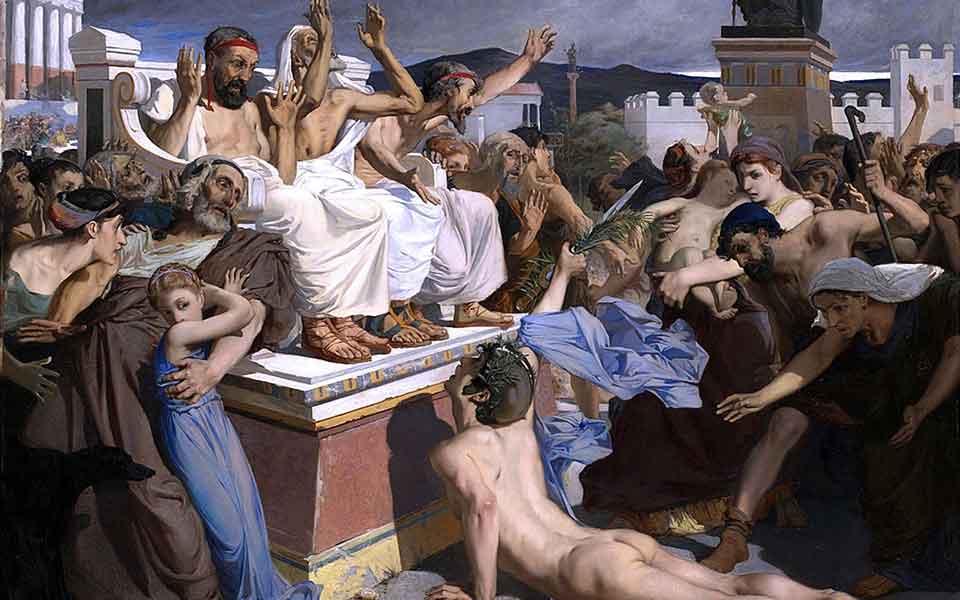
© Public domain
Resolute, Pheidippides made the arduous journey back to Athens as fast as he could, to deliver the news that Athens, with the support of Platea, stood alone in the defense of Greece. Once back in Marathon, he joined the ranks of the army, in preparation for the coming battle. In the course of less than a week, Pheidippides had run over 500km. (Aside from inspiring the modern marathon, his epic run between Athens and Sparta is the basis of a 246km ultramarathon known as the “Spartathlon,” held annually in Greece since 1983).
The allied Greek forces, numbering 11,000 men, led by the maverick general Miltiades, charged the Persians and scored a remarkable victory, against overwhelming odds. In the immediate aftermath, Pheidippides was once again called into action, this time to deliver news of the victory to the anxiously waiting Athenians. Running from Marathon to Athens, a distance of approximately 40km, Pheidippides delivered the message, “We have won!” (“Nikomen!” in ancient Greek), whereupon he collapsed and died from exhaustion.

© Shutterstock
The Birth of the Modern Olympic Games
The legend of Pheidippides’ run and his subsequent death played a crucial role in the revival of the marathon in the modern era. In the late 19th century, there was a growing interest in reviving the Olympic Games, which had been held in ancient Greece but had disappeared for centuries. The idea for the modern Olympics was conceived by Pierre de Coubertin (1863-1937), a French academic who believed in the educational and international value of sports.
The first modern Olympic Games were held in Athens, from April 6 to 15, 1896. To commemorate the ancient roots of the event, Coubertin proposed the inclusion of a long-distance race that would symbolize the spirit of the ancient Greeks and the heroism of Pheidippides. The marathon race was born, with a course of approximately 40km, based on the distance from the ancient city of Marathon to the heart of Athens.
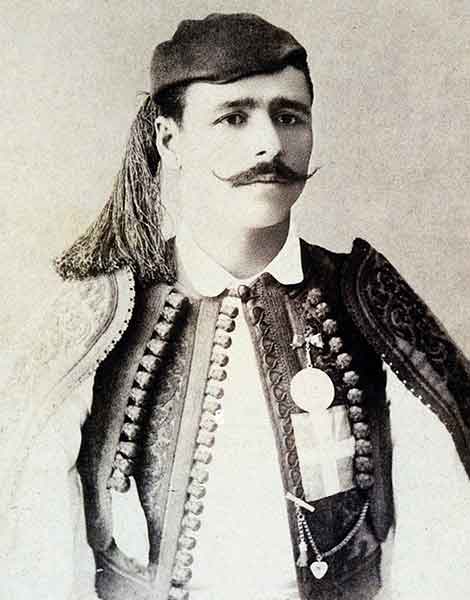
© Public domain
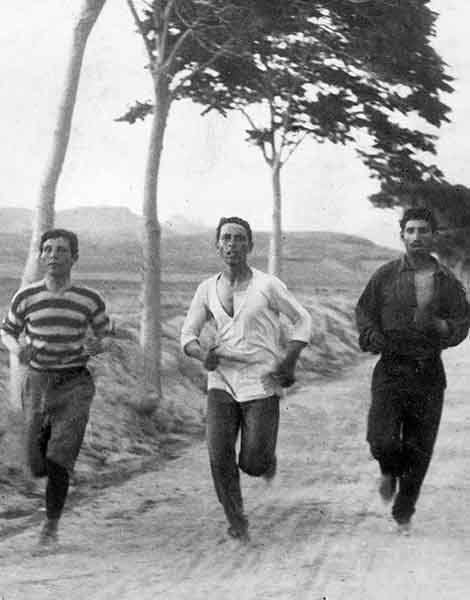
© Public domain
The first Olympic Marathon took place on Friday, April 10, and attracted 17 athletes from five countries: Greece, Hungary, Australia, France and the United States. Spiridon Louis, a water carrier from the town of Marousi, just north of Athens, emerged as the victor, with a time of 2:58:50. Fellow Greek, Charilaos Vasilakos, came in second, with a time of 3:06:03, closely followed by Hungarian athlete, Gyula Kellner, 3:06:35. Of the 17 runners to compete in the gruelling race, only nine crossed the finish line. Frenchman Albin Lermusiaux and English-born Australian runner Edwin “Teddy” Flack led for much of the race; Lermusiaux dropping out after 32km and Flack collapsing just 3km from the end. Remarkably, Flack had never before attempted a race more than 16km.
As a former soldier, Spyridon Louis’ victory served as a powerful symbol of Greek national pride, determination, and endurance, capturing the hearts of his compatriots and people around the world. Meanwhile, the popularity of the marathon quickly spread, becoming a staple event of the Olympic Games. In the following years, marathons were organized in various countries, and the distance of 42.195km (26 miles and 385 yards) became the standard for the event. The first international marathon race outside of the Olympics was held in Boston, Massachusetts, in 1897, known today as the Boston Marathon. John McDermott, an American, was the first winner.
The Boston Marathon played a crucial role in popularizing the marathon race in the United States and beyond. Other major cities, including New York and Chicago, soon followed suit and organized their own marathons. The London Marathon was established in 1981, and marathons sprouted up in cities all over the world.
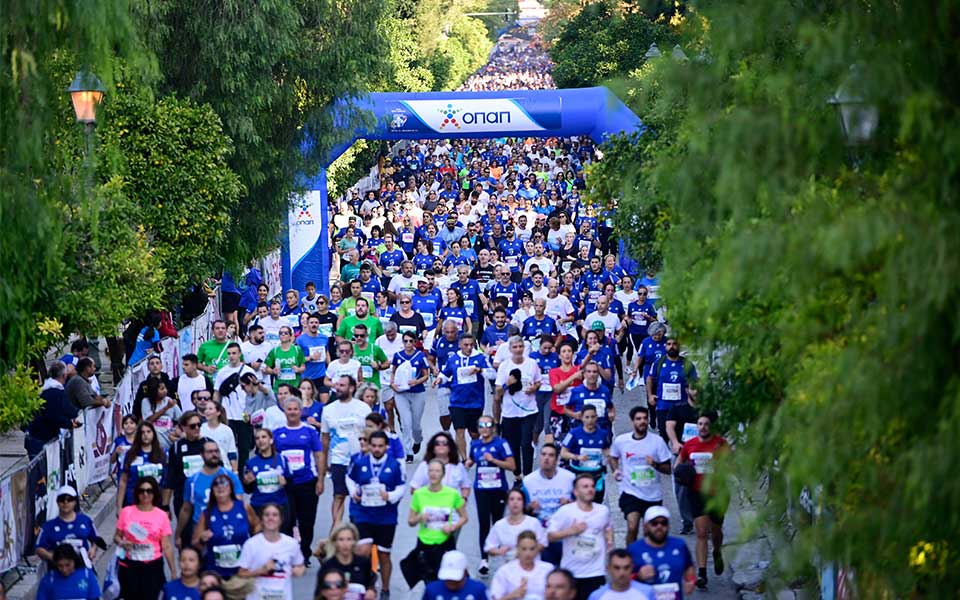
© AP Images
40 and Counting: The Athens Classic Marathon, The Authentic
Today, the marathon has evolved into a global phenomenon, with thousands of races held annually across the world. The first wheelchair marathon was introduced in 1974, in Toledo, Ohio, and official wheelchair divisions are a feature at many races. The modern marathon has also seen significant changes in terms of technology, organization, and the caliber of athletes who participate. Major marathons have become highly competitive and prestigious events, attracting the world’s most elite long-distance athletes, including Kenyan legend, Eliud Kipchoge, Haile Gebrselassie of Eithopia, Portugal’s Rosa Mota, the first Portuguese runner to win an Olympic gold medal (Seoul 1988), and Paula Radcliffe of Great Britain, to name a few.
The inaugural Athens Classic Marathon, which took place on April 8, 1972, was won by a Greek athlete, Yiannis Virvilis, with a time of 2:26:26. Today, the race takes place each November, typically on the second Sunday of the month. The course, which starts in the the town of Marathon, is notoriously challenging. It is often described as the most difficult marathon race in the world, running uphill from the 10km mark to the 31km mark – the toughest uphill climb of any major marathon.
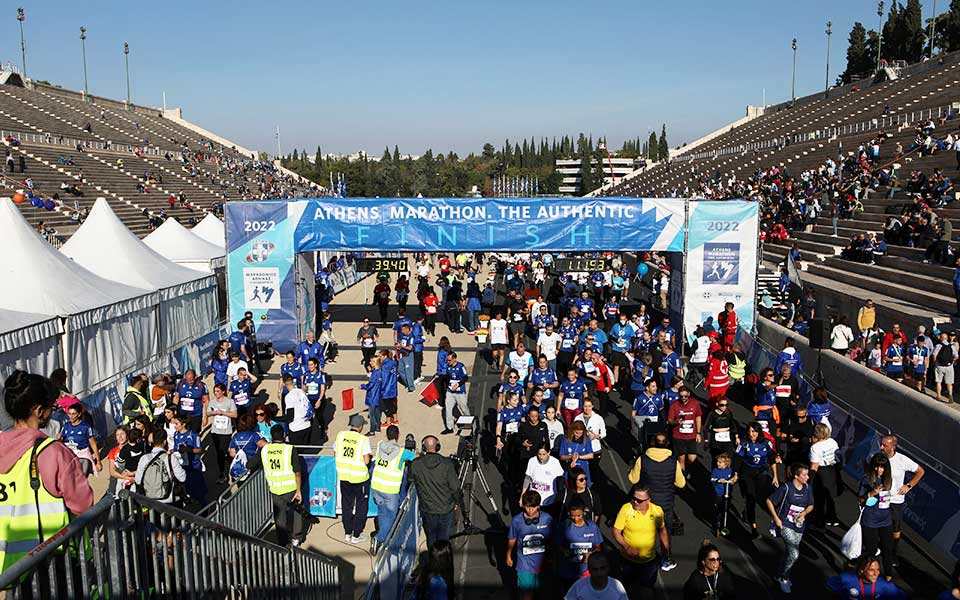
© AP Images
After the start, runners follow a scenic circular route around the Soros, the Tomb of the fallen Athenians, a memorial to the warriors who died in the Battle of Marathon. The course then steers towards the coast through the town of Nea Makri, after which it goes uphill, the most gruelling part of the race. Upon entering the city, runners make their way towards the central Vassilissis Sofias Avenue, past the American Embassy, the Megaron – Athens Concert Hall, and the Park of Liberty – and on towards Syntagma Square. Turning left onto Herodou Attikou Street, past the Presidential Mansion and the National Gardens, the runners finally cross the finish line inside the iconic Panathenaic Stadium, the main venue of the 1896 Olympic Games. The final leg of the race is especially moving for participants.
Current course record holders are Felix Kandie of Kenya, with a time of 2:10:37 in 2014, and Lithuanian Rasa Drazdauskaitė, the fastest woman to complete the race in 2:31:06, in 2010.
Today, the Athens Classic Marathon is not only a world-class sporting event but also a celebration of Greek history and culture, attracting thousands of runners and spectators from all over the globe. The race embodies the enduring spirit of the marathon and serves as a reminder of the heroism and determination of Pheidippides and the ancient Greeks who fought at Marathon, over 2,500 years ago.
In addition to the marathon itself, the Athens Classic Marathon offers several other race options, including a 10km, a 5km race, and a 1.2km kids race, making it accessible to runners of all ages and levels. The event also includes cultural activities, exhibitions, and celebrations, allowing participants and visitors to immerse themselves in the rich history and heritage of Greece.
For more information about this year’s event, please visit the official website here.

